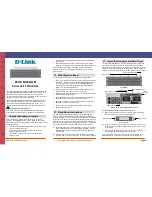
6.1 MAC Address Table Overview
This section describes the concept of the MAC address table.
Each Line Processing Unit (LPU) on the AR3200 has a MAC address table. The MAC address
table stores the MAC addresses of other devices learned by the AR3200, the VLAN IDs, and
the outbound interfaces that are used to send data. Before forwarding the data, the AR3200
searches the MAC address table based on the destination MAC address and the VLAN ID of
the data to find the corresponding interface rapidly. The MAC address table reduces the number
of broadcast packets.
The network administrator can manually configure the static entries in the MAC address table
to bind user devices to interfaces. Static MAC address entries improve the security of interfaces,
preventing unauthorized users from accessing the network.
6.2 MAC Address Table Features Supported by the AR3200
This section describes the MAC address table features supported by the AR3200.
Classification of MAC Address Entries
MAC address entries are classified into the following types:
l
Dynamic MAC address entries that interfaces learn from source MAC addresses in packets.
These entries are aged out after a specified period of time.
l
Static MAC entries that are manually configured. These entries are never aged out.
l
Blackhole MAC address entries that are manually configured. A data frame is discarded if
the source or destination MAC address matches a blackhole MAC address entry. These
entries are never aged out.
l
Secure dynamic MAC address entries that interfaces learn after port security is enabled.
These entries can be aged out or not.
l
Sticky MAC address entries that interfaces learn after the sticky MAC function is enabled.
These entries are never aged out.
Port Security and Sticky MAC
The port security function changes the MAC addresses learned by an interface to secure dynamic
MAC addresses. By default, secure dynamic MAC addresses are not aged out. You can set the
aging time for secure dynamic MAC addresses. After the AR3200 restarts, secure dynamic MAC
addresses are lost and need to be relearned.
The sticky MAC function changes the MAC addresses learned by an interface to sticky MAC
addresses. Sticky MAC addresses are never aged out and still exist after you save the
configuration and restart the AR3200.
The port security and sticky MAC functions enhance device security by preventing access from
hosts with untrusted MAC addresses.
MAC Address Limiting
The capacity of a MAC address table is limited; therefore, if hackers forge a large number of
packets with different source MAC addresses and send the packets to the AR3200, the MAC
Huawei AR3200 Series Enterprise Routers
Configuration Guide - LAN
6 MAC Address Table Configuration
Issue 02 (2012-03-30)
Huawei Proprietary and Confidential
Copyright © Huawei Technologies Co., Ltd.
156
















































